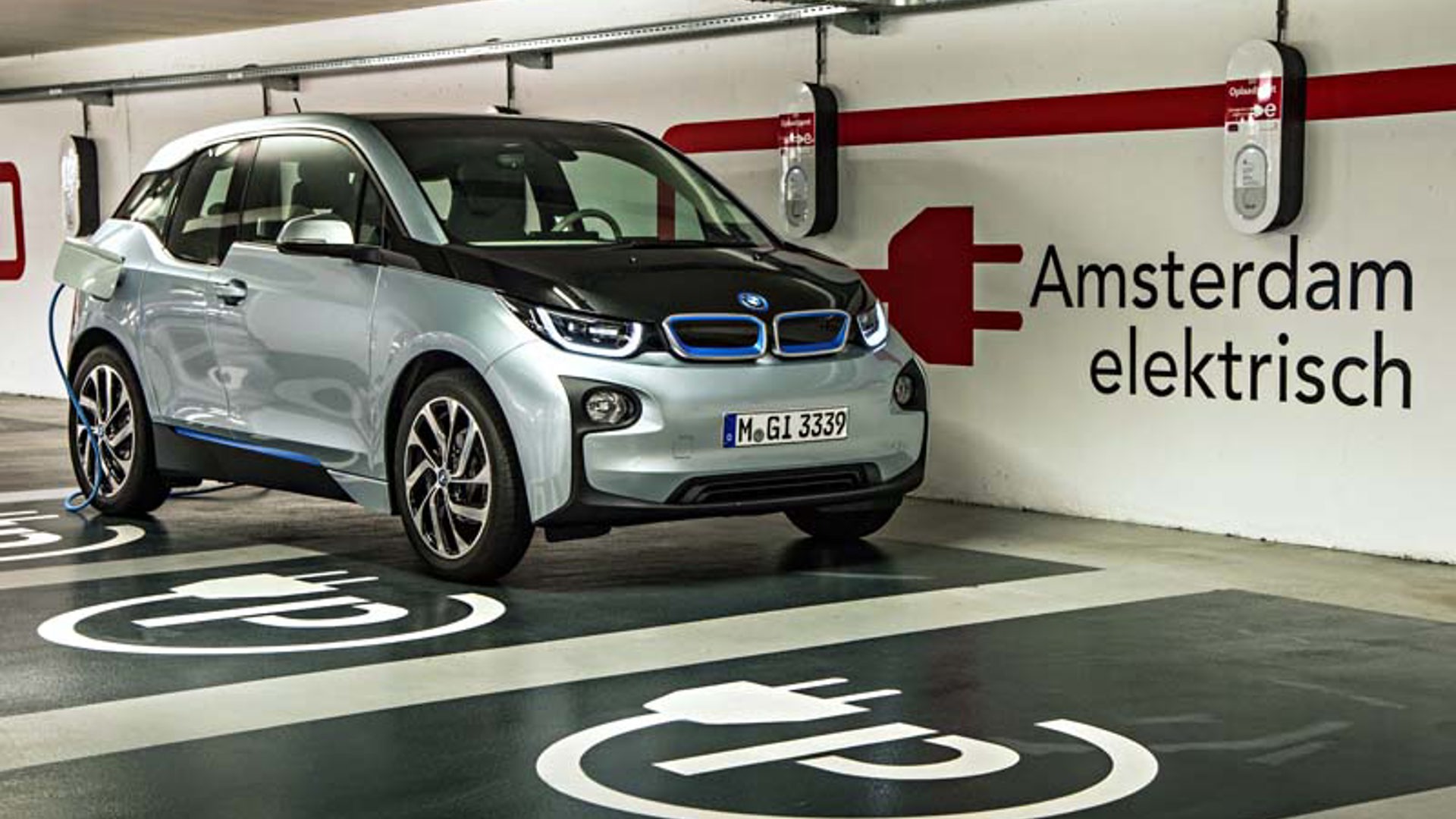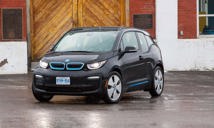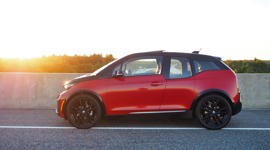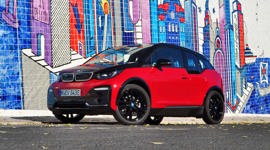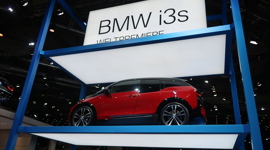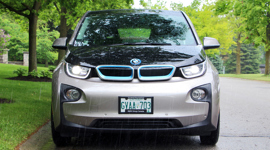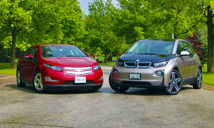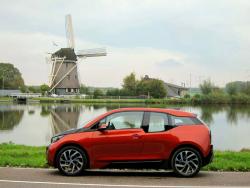 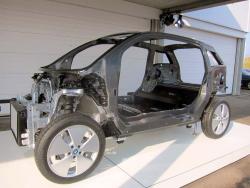 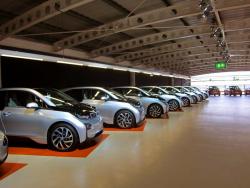 2014 BMW i3. Click image to enlarge |
Review by Lesley Wimbush, photos by Lesley Wimbush and courtesy BMW
Amsterdam, Netherlands – Named for the dam that crosses the river Amstel, this charismatic city in the Netherlands is one of the world's toughest places to obtain a driver's license. As such, Amsterdam has developed a complex network of transportation alternatives and has a vibrant and thriving bicycle culture that's well supported by dedicated bicycle lanes.
The city's core is like a wheel's hub, framed by concentric ring roads and canals, its spokes creating multiple intersections of seeming chaos.
It's probably the perfect place to launch an all-electric city car with an onboard connectivity system that not only locates any available charging stations, but the timetables of alternate transportation choices should the traffic become too congested.
The 2014 BMW i3, the first of BMW's new "i" electric lineup, has been in development since 2007. Over the past few years, we'd visited the company's Munich facility, where we saw the carbon-fibre safety cells in development, and the US manufacturing plant where BMW produces their own carbon fibre – thus bringing down the costs of this revolutionary yet very expensive material. This spring, we toured the Leipzig, Germany plant where the "i" cars are produced, admiring the clean, quiet and emissions-free workspace, the crash testing and repair shop requiring only strong glue and pressure instead of costly and noisy traditional practices, and the wind-powered turbines that provide the electricity for the entire operation.
Since its inception the i3 project's emphasis has been on sustainability – from production in the entirely wind-powered Leipzig plant, through its emission-free operation and its construction of recycled and recyclable materials.
And now – we finally got to drive it.
The first responses to my hastily tweeted photos during our two-day test drive were less than complimentary.
Acknowledged – the i3 isn't exactly pretty. With its boxy shape, odd beltline and oversized wheels – it's a bit alien.
2014 BMW i3. Click image to enlarge |
Here's thing – although the i3 comes from a manufacturer whose reputation was built on producing some of the finest performance machines money can buy, this is not what the i3 is about. BMW designed it to be a "mobility solution", one that moves comfortably within congested urban settings while providing constant feedback to its driver. BMW is looking towards a future where sustainability represents the "new premium", and after spending over 2.7 billion developing the i sub-brand they're no doubt hoping to capitalize on that.
With our boundless space, vast sweeping roadways and continuing love for large, powerful automobiles, it's hard for us to really visualize the environment that produced a vehicle like this. But they exist all over the rest of the world, which is becoming increasingly urbanized. The tiny Netherland's advanced infrastructure puts us to shame with our lack of planning and overwhelming gridlock. There are 5,000 charging stations in the Netherlands alone, and many incentives to support EVs. Despite the extremely narrow width of the roadways, dedicated bike lanes exist everywhere here – and indeed, in most of Europe.
BMW’s i3 is an all-electric four-seater built on an aluminum platform with a carbon-fibre frame. While that chunky, alien design might be a bit "unsettling" for our North American palates, in the modern, industrial landscape juxtaposed with the narrow, cobbled, labyrinthine road network of Amsterdam, the i3 fit right in. Outwardly, the only indication that it's a product of the Bavarian Motor Works company is the signature "twin kidney grille" – and in this case it's purely decorative – having no engine, the i3 doesn't need to breathe. It's rather a jarring design, with its blunt, bulldog face, sharp jutting side panels and a rear end that looks downright angry.
It's an example of what's known as a "one-box" design – with the majority of available space relegated to the roomy cabin. The odd beltline reduces the feeling of confinement in the rear quarters by letting in more light and providing more visibility. Suicide doors create a gaping entry and there's plenty of headroom fore and aft. The oversized turbine wheels are only 6 inches wide and aerodynamically sculpted to reduce drag.
2014 BMW i3. Click image to enlarge |
Our initial impression of the interior was that it was like a more upscale version of the Smart car – a space-age Jetson's pod with genuine wood accents and swaths of leather. There was an odd material treatment that we assumed was recycled carbon fibre, but which turned out to be sourced from a type of bamboo.
The dash-mounted drive selector is initially a bit awkward, though owners would probably soon become accustomed to it.
There are three driving modes: "Comfort", "EcoPro" and "EcoPro Plus", which prioritize responsiveness or energy conservation to varying degrees. An overnight charge using a 110-volt outlet can deliver up to 160 km in Comfort mode – with as much as 200 km of range if driven solely in EcoPro Plus.
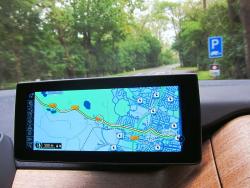 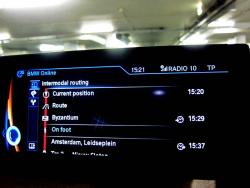 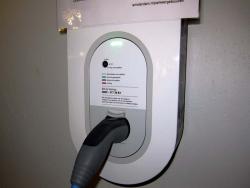 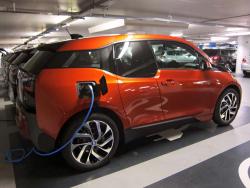 2014 BMW i3. Click image to enlarge |
On the dash is one of the more glorious examples of a graphics screen we'd ever seen. Mounted high on the dash like some expensive aftermarket HD television, it featured a first-rate graphics display and a navigation system that could point us to the nearest charging station. However, we were continually frustrated by the synchronization of its voice commands, which often didn't coincide with the on-screen instructions and required us to make numerous U-turns. Perhaps this was a sly method of showing off the i3's ability to turn on a dime (or as my driving partner Keith Morgan quipped "on a Euro"). The i3 has a turning radius of just 9.8 m and it could easily navigate the precariously narrow city streets and canal-side lanes – a few of which we had to exit in reverse after finding the way blocked by delivery trucks or other obstacles.
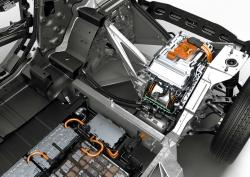 2014 BMW i3. Click image to enlarge |
Of course, the big question most readers are wondering is, "How does it handle?" For those that are curious if the i3 boasts all the sporty agility that BMWs are known for, well, it doesn't. For that they'll have to wait for the upcoming i8 sports car.
Like many electric vehicles, the BMW's bottom-located battery pack gives it a low centre of gravity that renders it extremely stable while cornering. It's also unbelievably silent, eerily so. But there isn't any of the inherent weirdness that we've come to associate with electric vehicles, and the i3 very quickly becomes comfortable and intuitive to drive. It has no trouble keeping up to highway traffic, thanks mostly to the instantly available 184 lb-ft of torque.
The regenerative braking requires a bit of getting used to, however. Rather than applying the brakes when coming to a stop, the driver need only lift off the throttle for the i3 to come to a stop. It took a while to adapt to this smoothly, which no doubt initially affected our range and efficiency.
Speaking of which, BMW has developed some connectivity apps that link the navigation system to an onboard iPhone docking station. The BMW iRemote app lets the driver check his efficiency (we scored an 83 percent), warm or cool the car prior to getting in it, while the intermodal transportation app can check for and reserve available charging stations, ditch the car if the traffic's too heavy and find other methods of getting there complete with estimated arrival times.
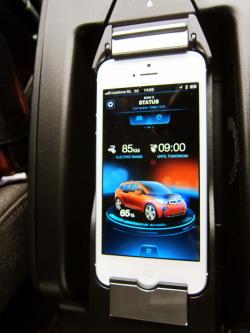 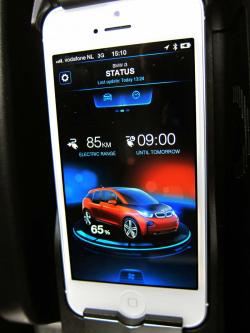 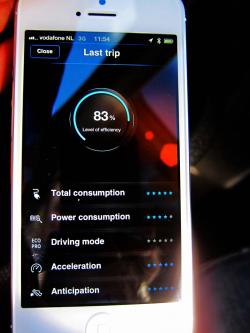 2014 BMW i3. Click image to enlarge |
During our two days of mixed driving, which contained some two-hour stretches of uninterrupted driving – we never fell below a 50-km range and therefore didn't experience any subsequent range anxiety.
[starratings o=4 p=3 c=4 i=3 e=3 f=5]
Of course the problem with bringing the i3 over here is that we haven't yet developed a workable infrastructure. And then there's the effect of our extreme cold winters on the battery's projected range. For that reason, BMW has also released an i3 with a range-extending ICE gasoline motor. Depending on where you live, there are provincial subsidies when you purchase an electric vehicle that can offset the initial sticker shock.
The fully electric 2014 BMW i3 powered by a 170-hp electric motor (184 lb-ft of torque) and 22-kWh lithium-ion battery pack will arrive in Canadian showrooms during the second quarter of 2014 for $44,950.
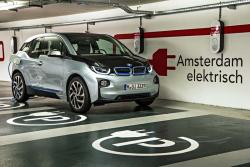 2014 BMW i3. Click image to enlarge |
Also available will be a $48,900 Range Extended version, which is virtually identical to the electric model but adds a backup energy source: a rear-mounted two-cylinder, 647-cc gasoline engine producing 34 hp. There are three trim levels, and in keeping with the BMW i3's futuristic image, they're named Mega World, Giga World and Tera World.
Base model "Mega World" comes standard with 19-inch aluminum wheels, BMW's ConnectedDrive system, navigation, LED headlights, 7.4-kWh charger and cloth upholstery.
The mid-range "Giga World" adds leather and wool upholstery, sunroof, Sirius XM satellite radio and a garage door opener.
|
Related articles Manufacturer’s Website Photo Gallery: |
Range-topping "Tera World" models have genuine leather upholstery and unique alloy wheels.
In summary, the BMW i3 is more than just a car, it's an amalgam of alternatives. And in these increasingly volatile times of fuel shortages, environmental destruction and increased urbanization, alternatives are something we have to explore.
Pricing: 2014 BMW i3
Base Price: $44,950
Competitors:
Chevrolet Spark EV
Fiat 550e
Ford Focus Electric
Nissan Leaf
Smart Fortwo Electric Drive
